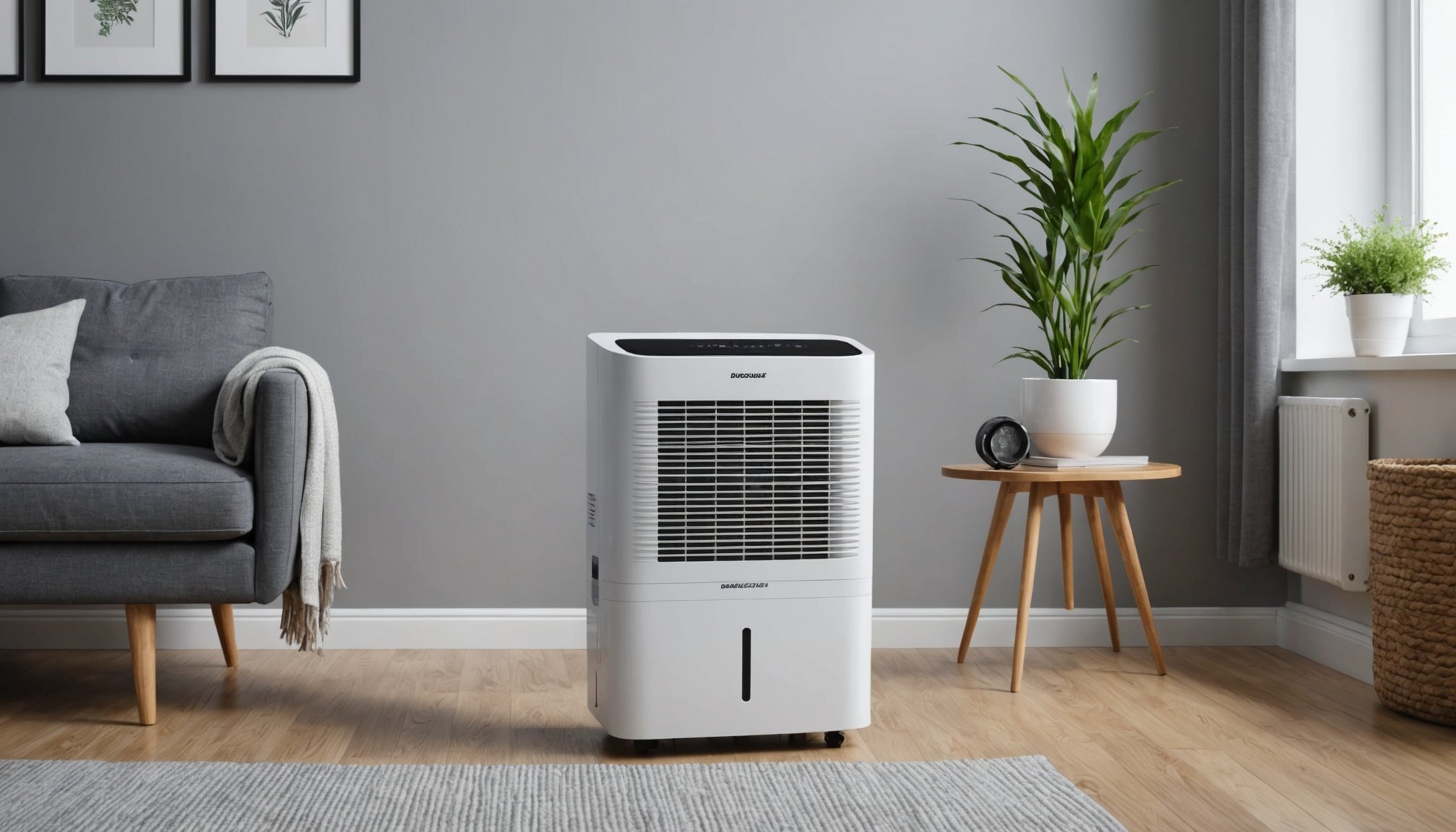Finding the ideal dehumidifier for a UK basement flat isn’t an easy task. It requires a good understanding of the space you want to dehumidify, the amount of moisture to be removed, and the dehumidifier’s capacity. This guide will help you navigate through the process and pick the best size dehumidifier to maintain a healthy and comfortable environment in your basement dwelling.
Understanding the Role of a Dehumidifier
A dehumidifier, as the name suggests, is a device designed to reduce the levels of humidity in the air. It works by drawing moist air into the unit, cooling it down to condense the water vapour and collecting the resulting water in a tank. The dry air is then reheated and released back into the room, thus reducing the overall air humidity.
A découvrir également : Unraveling the secrets of antique astronomical clocks
High humidity levels can cause mould and mildew growth, which can contribute to respiratory problems and allergies. It can also cause furniture, clothing and other belongings to become damp and damaged. Dehumidifiers are essential in spaces, like basements, which tend to have higher humidity levels due to their location below ground level.
Identifying the Humidity Level in Your Basement Apartment
Recognising the humidity level in your space is a crucial first step when choosing a dehumidifier. To do this, you’ll need a hygrometer, a device that measures the amount of moisture in the air. A healthy indoor humidity level is between 30% and 50%. If your reading is consistently above 50%, it’s time to consider getting a dehumidifier.
Sujet a lire : What are the best natural cleaning products for UK households with allergies?
Typically, basements are moist due to their lack of ventilation and proximity to the ground. In the UK, where the weather can often be damp, a basement apartment can be especially prone to excess humidity. Keep in mind, however, that the moisture level can vary over time and depending on weather conditions. Therefore, it’s better to take several measurements at different times and seasons to get a more accurate average.
Estimating the Size of Your Basement Apartment
The size of the space that needs dehumidifying will greatly influence the size and capacity of the dehumidifier you choose. The unit’s capacity is usually measured in pints per day, referring to how much water the dehumidifier can remove from the air in 24-hours.
Most dehumidifiers specify a recommended coverage area in square feet. To estimate the size of your basement apartment, measure the length and width of each room, then multiply these figures to get the area in square feet. Sum up the areas of all rooms to get the total square footage of the apartment.
Remember, if your basement is particularly damp, or if it has large open spaces, high ceilings, or many occupants, you may require a dehumidifier with higher capacity than the size of the space suggests.
Choosing the Right Size Dehumidifier
Once you’ve determined the humidity level and the size of your space, you can start looking for the best dehumidifier to meet your needs.
Small-capacity dehumidifiers are suitable for smaller spaces up to 500 square feet with moderate dampness. They can remove up to 10 to 20 pints of water per day.
Medium-capacity dehumidifiers can handle spaces between 500 to 1000 square feet with moderate to high dampness and can remove between 40 to 50 pints of water per day.
Large-capacity units are designed for spaces larger than 1000 square feet with extremely high dampness levels. They can remove more than 50 pints of water per day.
Remember that a dehumidifier’s capacity should match your needs based on the size of your space and the level of dampness. Don’t opt for a smaller unit hoping to save on energy consumption. A small dehumidifier will need to work harder and longer in a large, damp space, leading to higher energy costs and reduced lifespan of the unit.
Ensuring Efficient Use of a Dehumidifier
Once you’ve chosen the right dehumidifier, it’s crucial to use it efficiently to maintain optimal indoor humidity levels and keep energy consumption to a minimum. Placement is key; the dehumidifier should be centrally located and away from walls and furniture to ensure that air can circulate freely in and out of the unit.
The unit should also be kept clean; regularly clean or replace the filter as per the manufacturer’s instructions. This ensures the dehumidifier operates efficiently and prolongs the unit’s lifespan.
Finally, always remember to empty the water tank regularly. Most units will automatically shut off when the tank is full, but to keep the dehumidifier working efficiently, don’t let it reach this point.
To wrap up, choosing the right size dehumidifier for a UK basement apartment does require some effort. However, it is a worthy investment that will contribute to a healthier and more comfortable living environment.
Comparing Dehumidifier Models: Key Features to Consider
Once you’ve calculated the size of your basement apartment and determined the level of moisture in the air, the next step is to compare various dehumidifier models. There are several key features you should consider to ensure you choose the best dehumidifier that fits your needs.
Firstly, look at the capacity of the dehumidifier. As mentioned earlier, the capacity is measured in pints per day and indicates how much water the dehumidifier can remove from the air within 24 hours. The size of your basement apartment and the relative humidity level will determine whether you need a small, medium or large capacity dehumidifier.
Secondly, consider the water tank size. The water tank collects the moisture that the dehumidifier condenses from the air. Choose a dehumidifier with a larger tank if you do not plan to empty it frequently. However, remember that larger tanks will make the dehumidifier heavier and more difficult to move.
Another important feature to consider is whether the dehumidifier has a continuous drain option. This feature allows the dehumidifier to constantly drain the collected water into a drain or outside, eliminating the need for manual emptying. This might be a good option for a basement apartment, where high humidity levels can require frequent tank emptying.
Also, check if the dehumidifier has an auto-humidistat. This feature detects the moisture level in the air and allows the dehumidifier to switch on and off automatically to maintain a pre-set humidity level. This saves energy and ensures your basement apartment constantly stays within the optimal humidity range.
Finally, consider the energy efficiency of the dehumidifier. Look for units with Energy Star ratings, which indicate they are designed to save energy. A more energy-efficient dehumidifier will not only save you money on your electricity bill but also contribute to a healthier environment by reducing carbon emissions.
Conclusion: The Importance of Choosing the Right Size Dehumidifier
Choosing the right size dehumidifier for your UK basement apartment is essential. The right dehumidifier will maintain optimal humidity levels, prevent the growth of mould and mildew, and contribute to a healthier and more comfortable living space.
By understanding how dehumidifiers work, identifying your basement apartment’s humidity level and size, and comparing various dehumidifier models, you can make an informed decision and choose the best dehumidifier for your needs.
Remember, the size of the dehumidifier you choose will largely depend on the size of your space and the level of dampness. Small-capacity dehumidifiers are suitable for smaller spaces with moderate dampness, while large-capacity units are designed for large spaces with high dampness levels. Energy efficiency, water tank size, continuous drain option and auto-humidistat are also key features to consider.
Investing in the right dehumidifier is a worthwhile decision. Not only will it make your basement apartment more comfortable, but it will also potentially save you money in the long run by protecting your belongings from moisture damage and reducing energy consumption. So, take the time to make the right choice, and enjoy the benefits that a dehumidifier brings to your home.











